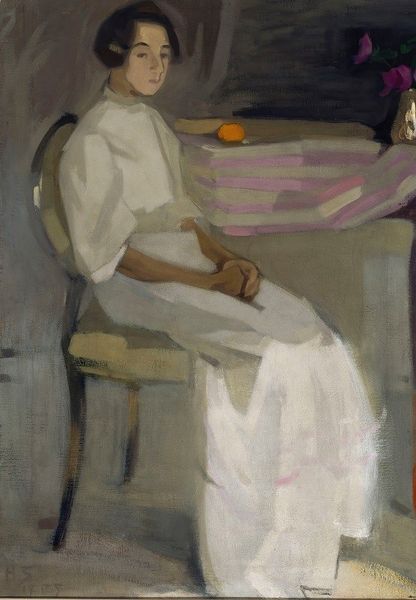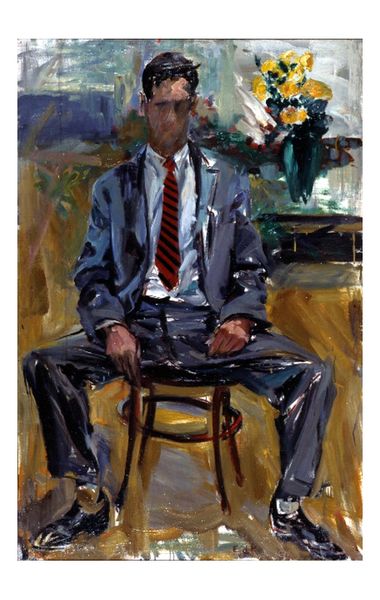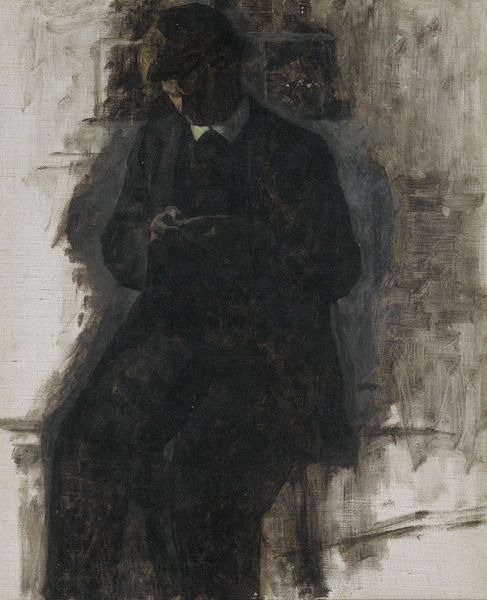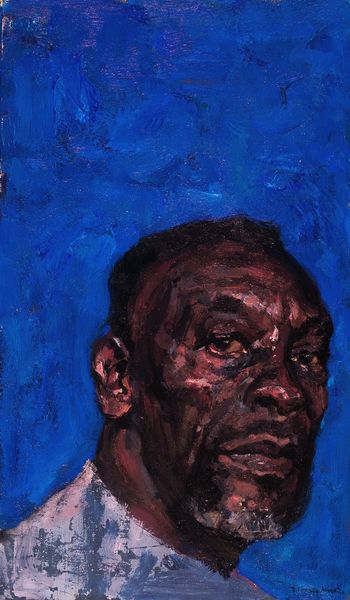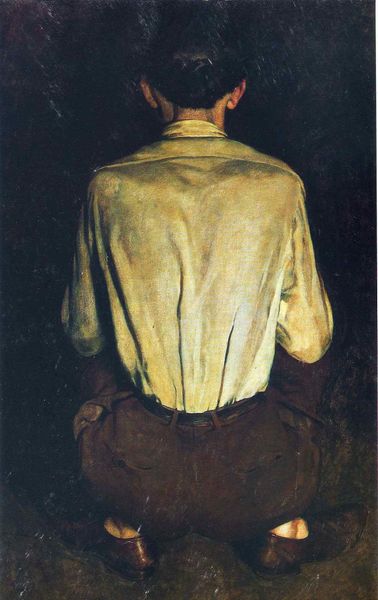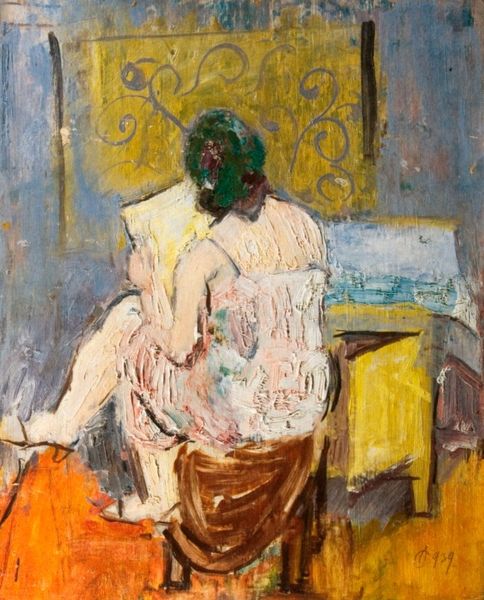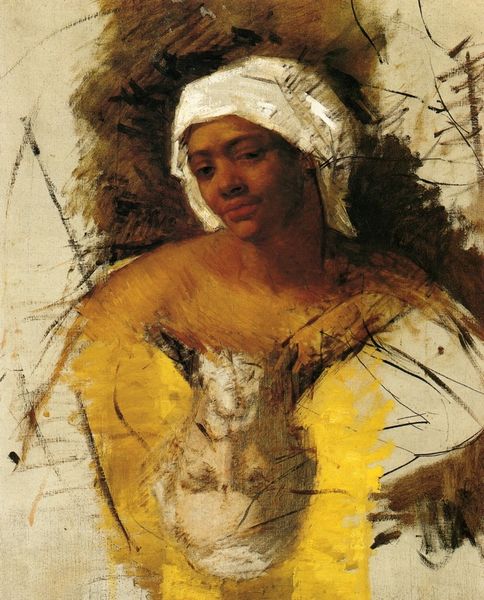
#
oil painting
#
portrait reference
#
portrait head and shoulder
#
animal portrait
#
animal drawing portrait
#
portrait drawing
#
facial portrait
#
portrait art
#
fine art portrait
#
digital portrait
Copyright: Public domain
Editor: This is Robert Henri’s "The Failure of Sylvester," painted in 1914. It's an oil painting of a seated figure. I'm immediately struck by the stark contrast between the light shirt and the shadowed face. What compositional elements do you find most compelling? Curator: The dynamic tension between the articulated form of the shirt, delineated by light, and the obscuring shadows is critical. Henri establishes a play of visibility and concealment, highlighting the subject's physical presence while simultaneously withholding access to his identity through the obscured facial features. The loose brushwork enhances the expressive quality of the work. How do you see Henri manipulating form and light to convey meaning? Editor: I see how the quick brushstrokes build form, but I am interested in the composition. The figure is centralized, yet seems almost swallowed by the chair, further reinforcing the "failure" suggested in the title. The muted color palette feels purposeful in establishing this mood. Are there underlying philosophical concepts at work here, would you say? Curator: Precisely. Consider the structural opposition: the figure's pose conveys a sense of resignation, the slump mirrors the curves of the chair itself. This compositional mirroring extends beyond simple repetition; it creates a symbolic enclosure. How might this strategic use of composition inform our understanding of the artwork's narrative? Editor: That's a great insight. The mirroring emphasizes the figure’s dejection. By obscuring his face, Henri focuses on posture and form to convey the emotional weight. I now notice the contrast between the crispness of the shirt versus the softer forms of the rest of the painting, which furthers this distinction. Thank you! Curator: Indeed. By deconstructing the artwork’s formal elements and understanding their interrelation, one can reveal complex layers of meaning embedded within it. It has been a worthwhile exercise, demonstrating the richness found in the formal analysis of Robert Henri's painting.
Comments
No comments
Be the first to comment and join the conversation on the ultimate creative platform.

